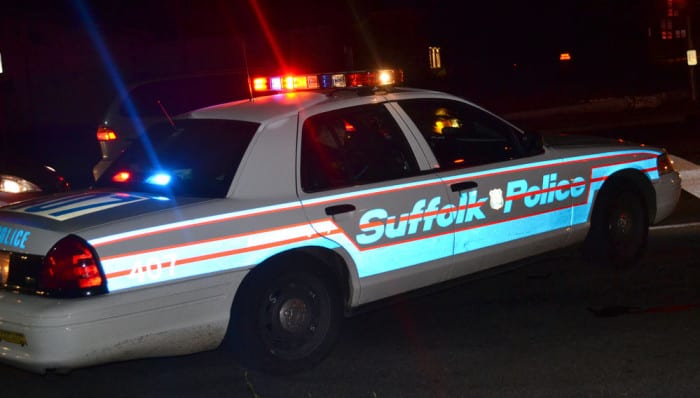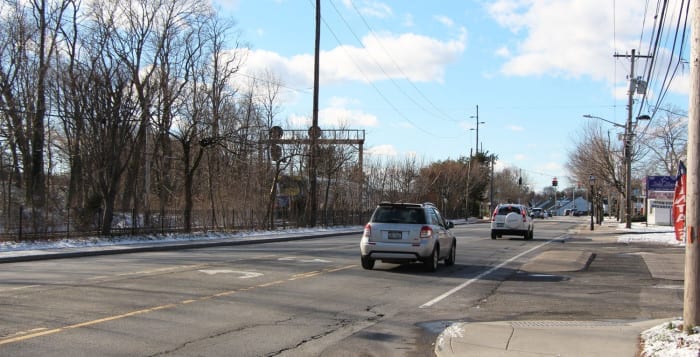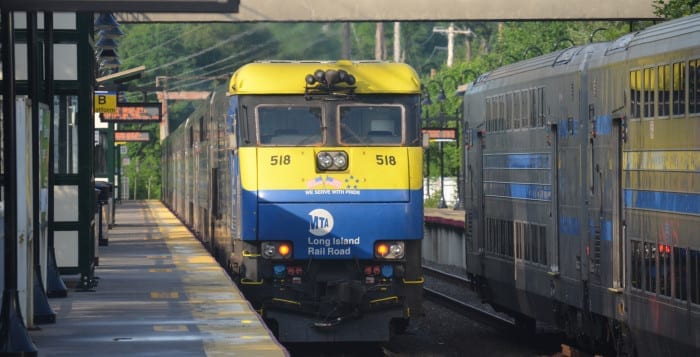After decades of waiting, Brookhaven officials said they were taking legitimate steps toward giving Route 25A a face-lift — starting with Stony Brook.
The town board approved a resolution on Thursday, Jan. 14, to conduct land use studies for Route 25A in Three Village and Port Jefferson Station. The town said it would be holding several meetings over the coming months at which residents can suggest ways to improve the de facto Main Street, especially near the Stony Brook Long Island Rail Road station and where Route 25A meets Nicolls Road.
This three-phase study will start with the Smithtown line to Nicolls Road. The two other phases, including the Port Jefferson Station study, will follow. Route 25A near the Stony Brook train station is part of the first phase.
Brookhaven Town Supervisor Ed Romaine (R) said the town will use money from a contingency fund in its operating and capital budgets to fund the study. The town hasn’t established dates, times and location, but Romaine said meetings will begin once the weather gets warmer in March or April.
“It’s long overdue,” Romaine said about the study. “We will be sending letters to [the Department of Transportation] and ask them to participate because a lot of the work we’re going to comment on are things [DOT has] to do, like additional sidewalks.”
Several civic leaders across the Three Village and greater North Shore community came out in full support of the land use study on Thursday with hopes of spurring the town board to expedite progress along 25A.
“The intersection of Nicolls Road and Route 25A is really the gateway to the communities of the Three Village community, and quite frankly it’s sort of a hodge-podge of commercial and retail buildings,” said George Hoffman, vice president of the Three Village Civic Association. “We also have a real problem with safety … because the corridor is really lacking crosswalks and sidewalks.”
The town also asked Stony Brook University to participate in this study. Similar land use studies and plans for Route 25A were conducted in 1963 and 1975 according to Robert de Zafra, former president of the Civic Association of the Setaukets and Stony Brook. A third study was conducted around 20 years ago.
Current civic leaders like Shawn Nuzzo, president of the Civic Association of the Setaukets and Stony Brook, have tried kick-starting revitalization efforts for Route 25A near the Stony Brook train station for several years. Nuzzo has often been at the forefront of all discussions relating to upgrading 25A and ushering in a new era of commercial and residential prosperity across the main road.
At Thursday’s town board meeting, Nuzzo said the town was finally taking a different approach when working with civic groups.
“There’s been a lot of false starts with this area because it was based in the past on this old top-down model, where the people at the top were going to tell the people at the bottom what they’re going to live with for the next 50 years,” Nuzzo said at Town Hall before Brookhaven passed the resolution. “But this model now with this corridor study and community visioning, this is a bottom-up model.”
Over the last several years, Stony Brook University students have worked with their professors to propose idealistic and practical ways to improve the area by the train station. The groups have been hosting events with residents at the Bates House in Frank Melville Memorial Park in Setauket and other locations, where they have pitched their plans based on various land studies of the 25A corridor.
Professor Marc Fasanella from Stony Brook University has been leading entire classes on the revisioning of Route 25A and challenging his students with finding realistic ways to make the corridor more appealing visually and logistically.
In a previous interview with Times Beacon Record Newspapers, he said the crux of the challenge was to think outside the box, no matter how outlandish the plans might seem.
“We looked at this as a tremendous opportunity for our students and for the community moving forward,” Fasanella said. “Are we dreaming? Of course we’re dreaming.”
Nuzzo said the area by the train station has united people throughout the community, but the entire corridor, especially near the LIRR, can not only be safer but also more visually appealing to the community.
“This is an issue that transcends political lines,” he said. “This is an issue that has unified both the civic association and the Chamber of Commerce who have historically been at odds with one another. We’re in that redevelopment phase of this corridor and this is really a once in a lifetime opportunity to have a community vision to have something nice for 75 to 100 years.”
Phil Corso contributed to this report.










